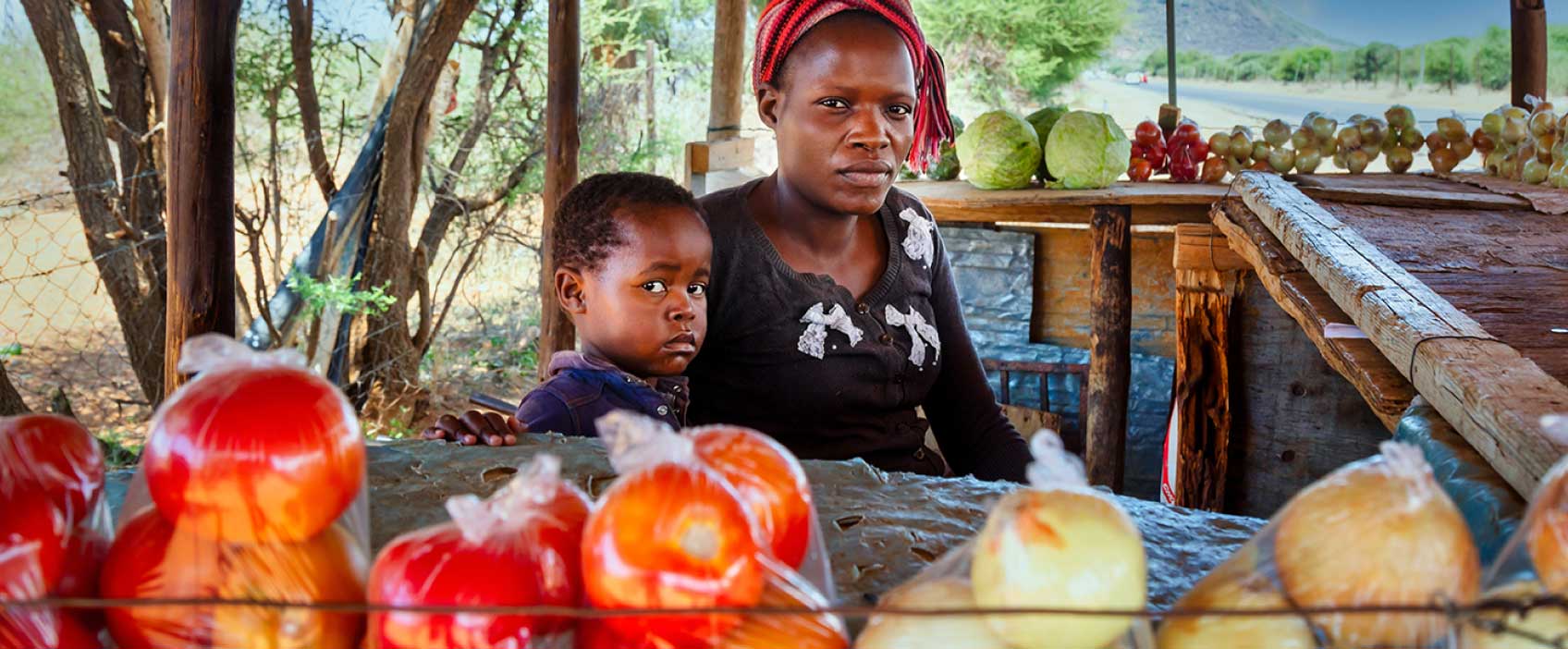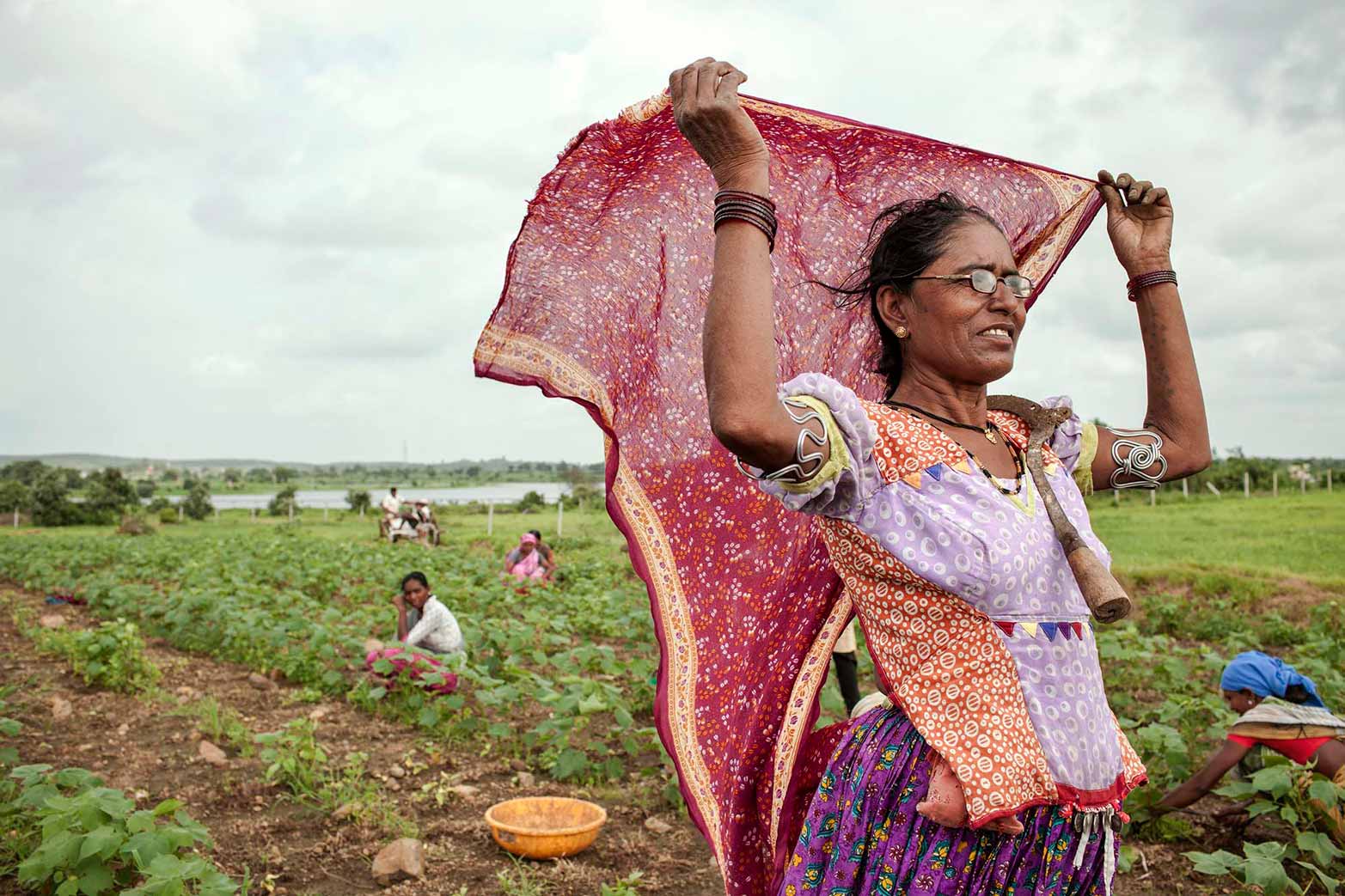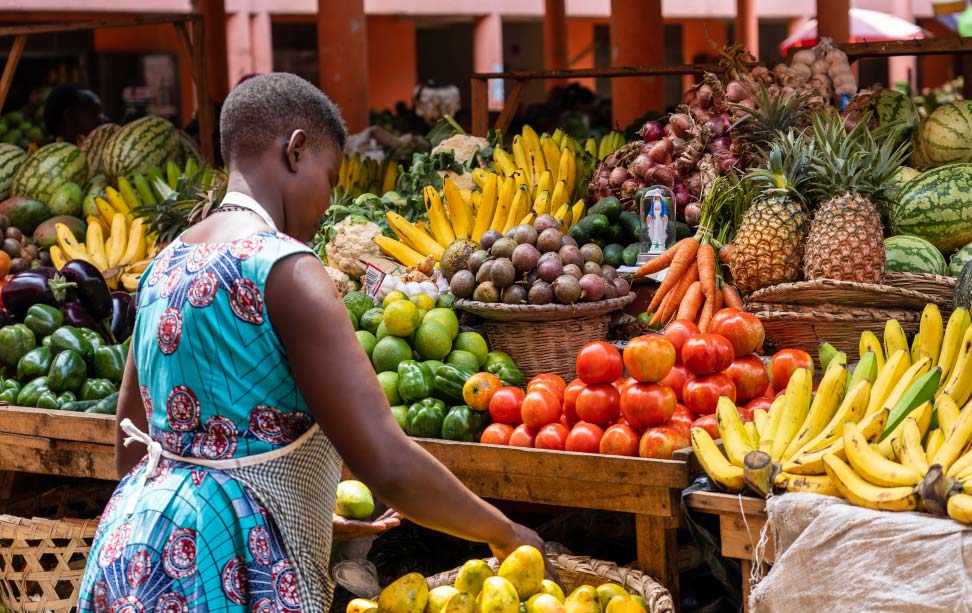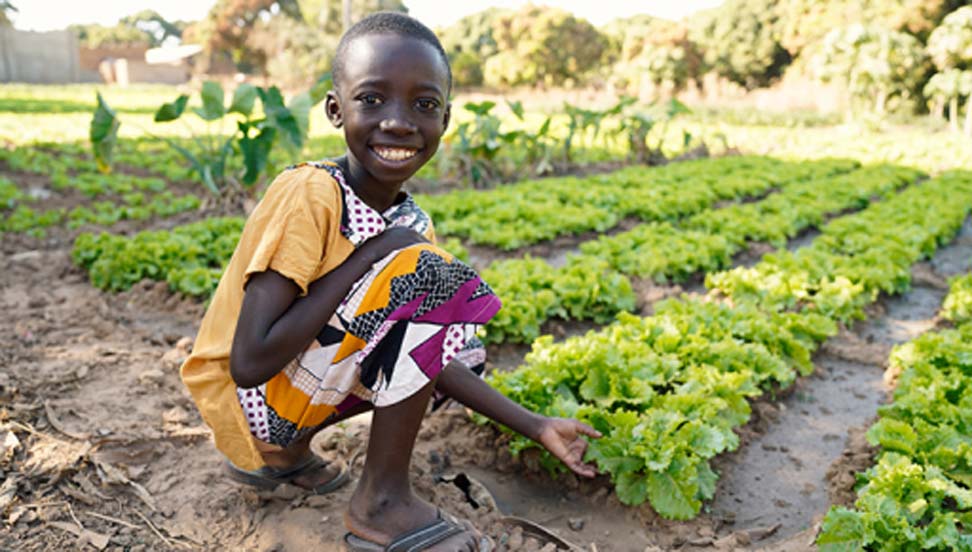
Publications and Datasets
IFPRI publications provide evidence-based insights and analysis on critical issues related to policies for food systems, food security, agriculture, diets and nutrition, poverty, and sustainability, helping to inform effective policies and strategies. Materials published by IFPRI are released under a Creative Commons license, and are available for download. IFPRI authors also publish in external sources, such as academic journals and books. Where possible we provide a download link for the full text of these publications.
Featured Publications
Working Paper
A good global investment for the United Kingdom: How investing in CGIAR reduces global poverty and benefits U.K. citizens
2025Hill, Ruth; Martin, Will; McNamara, Brian; Nia, Reza; Spielman, David J.; Takeshima, Hiroyuki; Vos, RobWorking Paper
A good global investment for the United States: How investing in CGIAR makes America stronger, safer and more prosperous
2025…more
Hernandez, Manuel A.; Headey, Derek D.; Hoffmann, Vivian; Kosec, Katrina; Martin, Will; Nia, Reza; Nin-Pratt, Alejandro; Piñeiro, Valeria; Takeshima, Hiroyuki; Vos, Rob; Zambrano, Patricia; Zhang, WeiJournal Article
Estimating multidimensional development resilience
2026Lee, Seungmin; Abay, Kibrom A.; Barrett, Christopher B.; Hoddinott, John F.Explore Our Latest Publications
Important: This website search is limited to displaying the 100 most recent results to ensure optimal performance. For access to the complete archive of IFPRI publications and resources, please visit the IFPRI Institutional Repository at https://cgspace.cgiar.org/.
By Title By Author By Country/Region By Keyword
Dataset
Tajikistan Rural Household Survey (TRHS) 2025
Journal Article
Armed conflict, community-based cash transfers, and social cohesion: Evidence from a randomized intervention in Ethiopia
Journal Article
The effect of teacher training and community literacy programming on teacher and student outcomes
Journal Article
Agricultural technology adoption and deforestation: Evidence from a randomized control trial
Journal Article
Understanding social safety nets and intra-household food allocation: Experimental evidence from Bangladesh
Journal Article
The effect of using indigenous and scientific forecasts on arable farmers’ crop yields: Evidence from Rwenzori region, western Uganda
Journal Article
Transfers, information and management advice: Direct effects and complementarities in Malawi
Journal Article
Increasing women’s empowerment: Evaluating two interventions in Uganda
Journal Article
How much do our neighbors really know? The limits of community-based targeting
Journal Article
Constraints and promising interventions to strengthen fish seed systems in Sub-Saharan Africa: Evidence from Ghana
Journal Article
Gendered networks and demand for an agricultural technology in India
Journal Article
COVID-19 and rural livelihoods: Lessons from a longer-term assessment and the path to recovery
Journal Article
Estimating multidimensional development resilience
Book Chapter
Agricultural mechanization
Journal Article
Higher altitude stunts children’s physical growth: A systematic review and meta-analysis
Journal Article
How can anticipatory action programming support women? Application of the reach-benefit-empower-transform framework in Nepal and Nigeria
Journal Article
Imperfect competition and asymmetric welfare effects of global price and productivity shocks: a CGE model analysis for Senegal
Journal Article
Understanding spatial heterogeneity of hidden hunger in Senegal
Journal Article
Step by step to higher yields? Adoption and impacts of a sequenced training approach for climate-smart coffee production in Uganda
Brief
Internal displacement and the measurement of women’s empowerment: Evidence from a test-retest survey experiment
Working Paper
The landscape of youth engagement in labor markets in Africa: Are youth driving structural transformation?
Journal Article
Whole maize flour could enhance food and nutrition security in Malawi
Journal Article
How social norms influence processes of change related to an economic intervention in Bangladesh
Journal Article
Does small-scale irrigation affect women’s time allocation? Insights from Ethiopia
Journal Article
Rice milling and parboiling trade-offs for economic and nutritional gains with special attention to sub-Saharan Africa: A comprehensive review
Journal Article
Integrating carbon sequestration and yield optimization in Indian cropping systems
Journal Article
The characteristics of community seed schemes for grains and legumes: Insights from northern Nigeria
Journal Article
Buyer-side gender discrimination in bargaining: Evidence from seed sales in Uganda
Journal Article
A measure of industrial clustering: Considering relatedness and scale
Book Chapter
The (un)affordability of healthy diets in South Asia and the implications for nutrition-sensitive food policies
Book Chapter
India’s agrifood system: Structural features and policy priorities
Book Chapter
Gender roles in South Asian food systems
Book Chapter
Adolescents in South Asian agrifood systems: Roles and aspirations
Book Chapter
Food environments and behavioral drivers of food choice in South Asia
Book Chapter
What are people eating in South Asia?
Book Chapter
Social safety nets for a nutrition-sensitive food system in South Asia: Lessons from India
Book Chapter
Consumption of foods high in fats, salt, and sugar in India: Prevalence, patterns, and policy imperatives
Book
The agrifood system in South Asia: Pathways to sustainable healthy diets
Journal Article
From data to decision: How the National Information Platform for Nutrition (NiPN) bridges the research-policy gap in Ethiopia’s nutrition sector
Journal Article
Household food production and dietary diversity in a remote, former socialist society: Panel data evidence from Tajikistan
Book Chapter
Evolving rural food environments in South Asia: The role of processed foods, traditional markets, and marketing influences
Book Chapter
Farming households’ adaptation to climatic shocks in South Asia: A food systems perspective
Book Chapter
Overview – Agrifood systems transformation in South Asia: An agenda for impact and learning at scale
Brief
Monitoring the impact of recent price volatility on food group consumption in Rwanda
Brief
Synopsis: Unlocking agricultural efficiency: A stochastic frontier analysis of smallholder farmers in Rwanda
Brief
When trade saves natural resources: Evidence from cereals trade in SADC
Book Chapter
More land, more diverse diets? Exploring production and consumption trade-offs in the eastern Indo-Gangetic plains
…more
Sayem, Md Abu; Gathala, Mahesh; Krupnik, Timothy J.Brief
Harvesting change: The impact of climate change on Africa’s agriFood systems
Brief
Rice productivity in Myanmar: Assessment of the 2025 dry season and outlook for the 2025 monsoon
Journal Article
Agricultural innovation frames, policies, and instruments: Evolution, lessons, and future research
Working Paper
Regional implications of public investments and external shocks in Papua New Guinea: An economywide analysis
Working Paper
Public expenditure on agriculture, youth out-migration, and engagement in agriculture? Evidence from Nigeria
Working Paper
Bridging the gap: How human-centered design can help unlock bottlenecks in the diffusion of small-scale irrigation in Nigeria
…more
Ringler, ClaudiaReport
Essential commodities prices, availability, and market actors’ perceptions: October 2025
Working Paper
Rewriting the rules: How U.S. tariff paths could reshape global trade
Brief
Nutrition and dietary quality in Sri Lanka: Insights from the 2024-2025 BRIGHT survey
…more
Sabai, Moe; Stifel, Elizabeth; van Asselt, Joanna; Weerasinghe, KrishaniBrief
From pledges to action: NDC 3.0 for poverty reduction and climate justice in Nepal
Working Paper
Climate risks and agricultural changes in conflict-affected Myanmar
Brief
The effects of a secondary school scholarship on youth outcomes: Evidence from a randomized trial
Brief
Accessing Aswesuma: Key findings on Sri Lanka’s new social protection program from the bright 2024-25 national survey
Working Paper
Implications of increased urbanization and consumer awareness on future food supplies in Tanzania
Brief
Food insecurity in post-crisis Sri Lanka: Evidence from the 2024-2025 BRIGHT survey
Brief
Climate shocks and climate smart agricultural adoption in Sri Lanka, 2024-2025
Brief
The state of agricultural extension services in Sri Lanka, 2024-2025
Brief
Water insecurity in Sri Lanka, 2024-2025: Evidence from the 2024-2025 BRIGHT survey
Working Paper
Impact of conflict on key agro-industries in Khartoum State, Sudan: Wheat flour milling, oil processing, and packaging
Brief
Vendors outside of markets in Viet Nam
Brief
Multistakeholder platforms in transboundary waters: What do we know, and where should we go?
Brief
Understanding recent prices increases of animal-source foods in Myanmar
Working Paper
Conflict and agricultural inputs: Impacts on maize yields in Nigeria
Report
IFPRI Malawi maize market report, October 2025
Journal Article
Vulnerability of Nigerian maize traders to a confluence of climate, violence, disease and cost shocks
Report
Statistics from Space: Next-Generation Agriculture Production Information for Enhanced Monitoring of Food Security in Mozambique – Groundtruthing data collection and stakeholder engagement report
Report
Statistics from Space: Next-Generation Agriculture Production Information for Enhanced Monitoring of Food Security in Mozambique – Groundtruthing data collection and stakeholder engagement
Report
Statistics from Space: Next-Generation Agriculture Production Information for Enhanced Monitoring of Food Security in Mozambique – Enumerators training report
Dataset
Ultra-poor Graduation Midline Survey in Somalia, 2023
Dataset
Ultra-poor Graduation Endline Survey in Somalia, 2024
Working Paper
Food systems in conflict-prone and climate-affected areas of Northern Nigeria: Humanitarian and development challenges
Working Paper
Mapping the design and implementation of seed sector regulation: The case of Rwanda
Working Paper
Gender, nutrition-sensitive agricultural interventions, and resilience: Evidence from rural Bangladesh
Working Paper
Economywide assessment of CSA interventions in building resilient agri-food systems in Rwanda
Working Paper
Can digital cash transfers serve those in active conflict? Evidence from a randomized intervention in Sudan
Report
Myanmar Monthly Food Price Report – September 2025
Working Paper
The changing demographics in Nigeria’s food systems and implications for future youth engagement
Working Paper
A good global investment for the European Commission: How investing in CGIAR reduces global poverty and benefits E.U. citizens
Data Paper
Experiential learning for groundwater governance in India study data
…more
Ferguson, Nathaniel; Shastri, Seema Vigneshwar; Reddy, Hemalatha; Foundation for Ecological Security TeamJournal Article
Unlock genotype-environment-management interaction via field phenotypic insights for multi-scale prediction of winter rapeseed flowering in the Yangtze River Basin
Journal Article
Impact of conflict shocks on land rental market dynamics: Panel evidence from Nigeria
Journal Article
Food acquisition, preparation, and consumption practices in South Asia: A scoping review of assessment tools
Journal Article
Food price stabilization: Theory and lessons from experience
Journal Article
Farmers agronomic management responses to extreme drought and rice yields in Bihar, India
…more
Malik, Ram; McDonald, AndrewWorking Paper
Agricultural distortions and international migration
Report
Resilience science must-knows: Nine things every decision-maker should know about resilience
…more
Biggs, Reinette; Boyd, Emily; Broadgate, Wendy; Brown, Katrina; Carpenter, Stephen R.; Collins, Greg; de Coning, Cedric; Denton, Fatima; Ferreira, Regardt; Folke, Carl; Gordon, Line; Hamann, Maike; Hornberg, Jesper; McPhearson, Timon; Nagendra, Harini; Ringler, Claudia; Rockström, Johan; Romero-Lankao, Patricia; Scheffer, Marten; Westley, Frances; Ziervogel, GinaWorking Paper
Armed conflict, community-based cash transfers, and social cohesion: Evidence from a randomized intervention in Ethiopia
Journal Article
Resilience in technical efficiency and enabling factors: Insights from panel farm enterprise surveys in Kazakhstan and Uzbekistan
Journal Article
Multivariate stability analysis to select elite rice (Oryza sativa L.) genotypes for grain yield, zinc and iron
Journal Article
Exploring rancidity in pearl millet flour: A lipidomic and biochemical approach
…more
Bhatnagar-Mathur, PoojaJournal Article
Methods for estimating beneficiary populations targeted by health and nutrition interventions for women, pregnant women, infants, and young children
Journal Article
Aggregation models in agricultural value chains of staple crops and their potential application for biofortification: A scoping review
Opinion Piece



